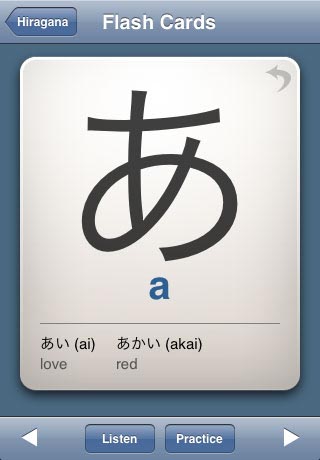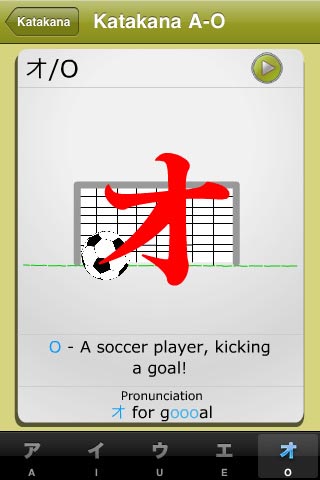I started learning Japanese. It was a weird coincidence. First I was listening to a couple of podcasts from people living there. This primed me already for the topic. Then I couldn’t resist buying a certain book on a certain game I enjoy very much. That book was actually in Japanese so in order to justify the purchase, I felt obliged to at least try to understand it. Finally, my girlfriend asked be why I never learned it.
And it’s a good question, too. I think learning a language only makes sense if you have enough opportunities to get exposure to the language. So for example, learning Spanish wouldn’t make much sense in my case. I would need to deliberately make an effort to get me into situations where I would need to use the language – go on vacation to Spain, read Spanish books, etc. After all, you can’t just learn a language and let it sit in your head. A language needs maintenance. As it happens, my current lifestyle doesn’t provide much opportunities for a language like Spanish but provides lots of opportunities for Japanese. I play a lot of games from Japan. I also used to read quite some comics from Japan and I was fond of Japanese animated series. Considering this, it’s weird that I didn’t do it before.
But then again I’m not a big language learner. Especially not in the traditional sense. So I thought I keep it low-profile. I took an advice from a professional and started with the alphabet first, specifically Hiragana and Katakana. Also, I didn’t buy books, I bought apps instead.
It seems like a good starting point is the iKana app for iPhone. It is a beautiful, polished and comprehensive directory of all Hiragana and Katakana characters. There are also functions to practice the recognition of selected characters and even a simple quiz for learning how to write them. It’s a perfect tool for practicing the alphabet.

But the problem is that it is not a very good tool for learning them in the first place. As a newcomer, all charters looks the same to me. I need at least some guidance to get started. So I got myself one of the HiKaChan apps. They are actually not very good. They are ugly, the UI is bad. Some functions are poorly executed to the point of being useless. And they have less content than iKana – you need to buy an app for Hiragana and a separate app for Katakana. However, they do have one big strength. Each character is introduced by comparing it to an image – a so-called mnemonic device. The pictures are far from perfect. Some are quite a stretch and they often rely very much on the fucked-up english pronunciation (”i” like an “Eagle”??). However, even this small help goes a very long way for a newcomer to get familiar with the characters.

So my current setup is to learn the characters in HiKaChan and practice them in iKana. It’s going to be a long journey but I already had some sense of achievement. I was able to “read” a couple of words. I’m going to keep you posted on my progress.






A noble goal. I always wanted to be able to speak japanese as well. I took three years of it in school and have now forgotten it all of course. But let me tell you, you are in for a world of pain!
It is a very very difficult language to learn. Richard Feynman, a genius and one of the worlds most brilliant physicists, gave up in disgust. Sentece structure is backwards from english so you have to start thinking backwards. You’ll constantly use diffent words for the same thing depending on who you are talking to, and, what you are talking about (which is what Feynman hated). Words are made by mixing kani icons with phonetic characters. Kanji will have different pronunciations depending on the words in which they appear. For this reason even a japanese person may not be able to sound out a word they are reading if they don’t know it. Not to mention a plethora of verb forms with special cases abound.
Basically, if you were assigned to construct the most difficult, convoluted language possible, you would come up with Japanese. Not that english is particularly easy. Anyway, good luck!
Gee, thanks for the encouragement.
With all respect to Feynman, from what I gather his area of expertise was physics, not necessarily linguistics. Also, for learning languages, the most important factor is age, not “intelligence”. Finally, I am already familiar with Polish, which is a very difficult language as well. Compared to that, English is actually very easy.
And it seems like for being able to read games, I don’t really need Kanji.
But yeah, I heard that it is a difficult language. I certainly have respect towards it.
pretty ignorant comment if i do say myself
がんばって下さい。 (Do your best – Sorry, couldn’t resist).
I haven’t run across many good iPhone apps for learning the kanas. You might want to give the free trial for “Human Japanese,” though. I thought it was pretty well presented for a beginner when I looked through it.
I think the traditional way for gaijin to learn is to tackle each set of 5 (or 10) at a time: learn the ‘vowels’ あいうえお (and maybe their katakana variants, アイウエ)オtogether first, then when you’ve got them move onto the k-consonants か… (and possibly カ…), then the next group starting with the same consonant and so on. When I was doing this, I developed my own mnemonics for the symbols, which don’t really match up with standard ones, but I think those work best because they’re personalized to you.
Also, I’d recommend giving slime forest a whirl, which is pretty awesome: http://www.lrnj.com. There’s a demo for that (I’m not sure if beginning kanji or kana is available in the demo. It was one of the first places I learned the kanas but I think the demo has changed quite a bit since I first started using it).
If you get to the point where you’d like to practice writing or reading with another student, feel free to send me an e-mail ( [myname]@gmail.com )
Thanks for the tips!
5-10 kana at a time – yeah that’s exactly what I think I’ll do for the next weeks.
I heard about the Slime Forest. Might be the perfect thing for me to try. But the graphics REALLY turn me off. :/
Hey that makes you my target group. Why didn’t you say earlier? Let’s talk…
Well, I just started this weekend and you are busy all the time anyway.
Check out “Remembering the Kana” and “Remembering the Kanji” by James Heisig, they’re supposed to be very good. (I didn’t actually use them, having my Chinese background, but the method sounds promising. Recommended by Khatzumoto and even Ralf Bähren (KISD alumni))
Here’s an inofficial web version of those: http://kanji.koohii.com/
Saw Chen’s post and thought I’d comment: I’d second the recommendation for “Remembering the Kanji”; I really like it. I haven’t read the kana book, but I suspect it’s good, too.
I don’t really think I will need books for the kana. It seems manageable at the moment. But the Kanji are certainly daunting. I might grab the book when I get there. Right now, I’d rather not think about all the next steps further down the line.
Some years ago I tried learning it as well, but gave up due to other things I wanted to learn in my life + I had to learn Spanish in school (which I never did, anyway).
I bought some books, a Nintendo DS games and other things about the Japanese language, but I found the most effective way of learning in actually using the language in a real practical manner.
I found this Japanese guy who runs (or ran, I don’t know anymore) an online course in which he teach people his language. Although I never completed the course, I think it was a very good way of learning.
You can find a website about him here:
http://www.freewebs.com/megumisan/index.htm
… but his main site was stored on Yahoo! GeoCities which was turned off some time ago :\
Nice plans! This sounds totally interesting to me and made me a little jealous as well. But I won’t have the time to learn the japan language. Don’t let bring you down, especially by the people who say “oh, that such a hard thing to do”. It took me years as well to learn a whole bunch of programming languages and structures, but meanwhile I think I achieved speaking different programming languages “fluently” and in everyday use.
A context-sensitive language like japan language, that sounds totally interesting. Source Code is also often depending on context. I thought also a lot about “Metaprogramming” that somehow is rooted on the programming language “Ruby” (from Japan as well). Just like the japan language you can go “up the abstract-levels” all the time – until you reach most expressive power with very few code. You can guess most things. But if you forget the things to guess, it is almost impossible, to review in the source code, because it is too encapsulated to be read. Often you will be better of studying the context and make educated guesses, based upon logic and grammar.
Yeeeah, I wouldn’t really compare programming languages to human languages. They are both so very different.
And hey, I have no time either. But every journey begins with an App…
> Yeeeah, I wouldn’t really compare programming languages to human languages. They are both so very different.
Well, I think the difference is, that I do.
I see. Do you call a computer mouse a rodent as well?
Haha, it depends on the context..